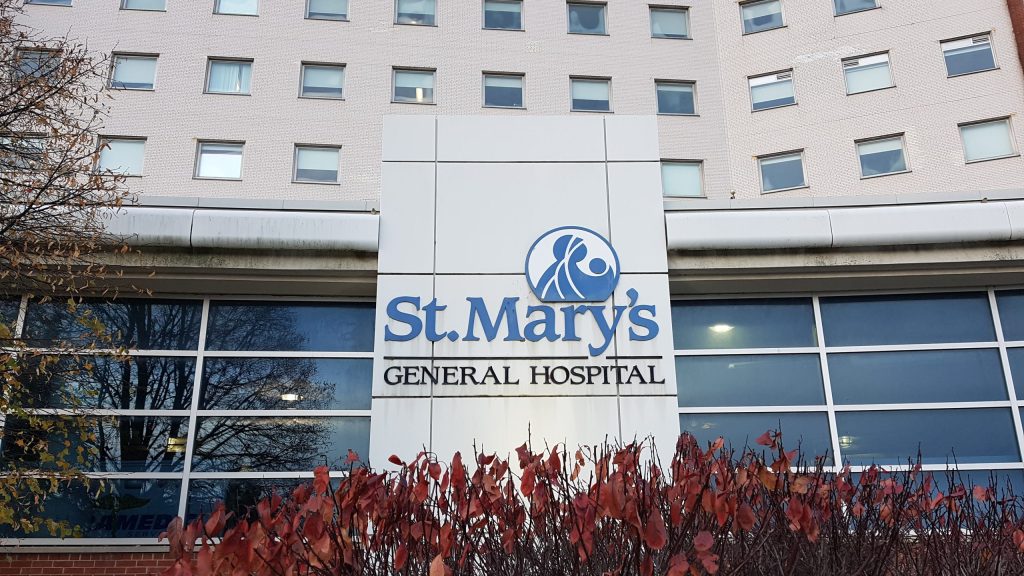Hospice Waterloo Region helps terminally ill through their end of life journey
Posted Nov 11, 2021 08:53:52 PM.
When Judy Nairn tells people she works at a hospice, the typical response is “oh, that must be so sad.”
But Nairn says it’s quite the opposite.
“This is not a sad place, it’s a place of love,” she said. “The whole focus here is about celebrating life. We have a lot of parties, we have a lot of celebrations, you know, celebrations of a birthday or celebrations of a new baby. Because that's what people want to do as they're approaching the end of life.”
Nairn is the executive director of the Gies Family Centre (GFC), which opened its residential hospice in March 2021. The GFC operates under Hospice Waterloo Region, which has been offering free community outreach hospice services for 28 years.
“So for those 28 years, we were in a number of different offices, the most recent one being on Lawrence Avenue in Kitchener. And we provided services to people who had a diagnosis of what we call a life limiting illness, an advanced illness, where they just needed some support in the journey towards the end of life,” she said.
They have around 250 specially trained volunteers who provide full spectrum care to terminally ill people, from the diagnoses, to end of life, to offering bereavement services for the family. However, they didn’t offer a residence component until recently.
“When people hear the word hospice, they immediately go to the bed, a place where people come to die,” she said. “But for us, hospice is much more than that. It is a full journey of people who have an illness, supporting them through the illness, supporting them through end of life, and then supporting their families in bereavement afterwards.”
But about five years ago, they realized they had outgrown their space on Lawrence Avenue.
“We needed a bigger space anyway, [so we decided] that it was time to add a residence beds component,” she said.
They opened their new building in March 2021. In that time, they’ve had over 70 residents and families come through their doors.
It has just 10 beds, which Nairn says keeps it feeling more like a home than an institution or hospital.
“Everybody has their own private room, the family gets to sleep over if they want to stay with the person 24 hours a day. The average length of stay when they're in the residence is about 17 days right now. So they come in very sick, very close to the end of life,” she said. “We go through the end of life experience, but we also work with the families on their bereavement needs and the supports they might want and things like that.”
For the 10 beds, they typically have two nurses and a PSW on, helping the residents manage their illness, and any pain they might be experiencing. They also have social workers there to support the family.
“What we hear from them all the time is it's so nice to get here and just be family again, and not have to worry about providing the care at home,” she said.
Their new space was built specifically for them, with special attention to the feel of the building, which is bright and airy, filled with tons of natural light. Each room features its own private patio, which the beds can be easily wheeled out to.
The building centres around a silo, which acts as the family ceremonial room. Symbolism is present throughout: the silo represents the circle of life, and around the silo are the four elements in the way of a small stream, an open air garden, and a fireplace across from the door.
One of their goals is to normalize the idea that dying is a natural conclusion to life.
“There are very sad elements to it, don’t get me wrong. But for the most part, recognizing death as a natural conclusion to life lets you celebrate the life that was lived, and we try to do that as much as we can.”
Back when homes were multigenerational rather than nuclear, “grandma lived with the family. And then grandma became sick and died,” Nairn said. “So the kids were exposed to it, the wake was in the parlour, all the neighbours came around. It was very communal.”
But eventually, death “became a very medicalized event, and it moved off into hospitals.”
It became something scary that people avoided talking about. This shift, Nairn says, has created a kind of unnatural experience for people that can be quite traumatizing.
“And it shouldn’t be. So our whole focus is around, how do we help people normalize this experience,” from coming to terms with dying to grieving a lost loved one.
“There have been all kinds of studies about end of life preferences. 80 per cent of people prefer to die at home, [but] 80 per cent of people die in a hospital,” she said. “That's just the way it goes. Families work really hard to try to keep somebody at home. But it is so hard to get any kind of nursing support that you need. Out of a 24 hour day, you know, they're lucky if they get four hours of support. So for 20 hours, they're caring for and worrying about the person.”
But with the hospice, they can shed that caregiver role and just focus on being a family, spending time with their loved one before they die.
“That's what we really try to do, we try to create a space where they can celebrate and be a family and go through memories,” she said.










